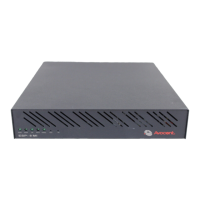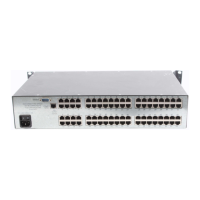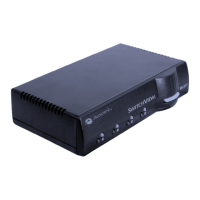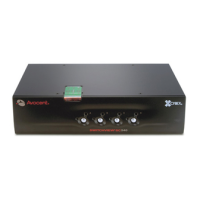4 ESP-4 MI Serial Hub Installer/User Guide
Physical interfaces
Each port supports the standard RS-232 DTE serial signals using a male DB-9 connector, with the
exception of RI (Ring Indicator).
Each serial port may be configured to support the following interfaces:
• RS-232 DTE signaling.
• RS-422 signaling (default).
• RS-485 2-wire half duplex (HD) signaling. This interface uses ADDC (Automatic Data Detec-
tion Control) mode. The transmitter is enabled and the receiver is disabled when a space (zero)
bit is sent. The transmitter is disabled and the receiver is enabled when a mark (one) is sent.
This allows rapid turnaround and release of the data pair.
When the RS-422 or RS-485 interface is enabled for a port, you may also enable/disable 100 ohm
termination of the differential receive signal pair on that port. This termination is typically used in
RS-485 environments when the device is the first or last on a multi-drop line for a 2-wire
configuration. This termination should always be set when the unit is configured for RS-422, as this
is a point-to-point configuration.
If your configuration includes supplying your own external termination, the termination on the
ESP-4 MI hub should not be used.
Network interface
The network interface speed may be configured with the following values.
Auto-negotiate
10 Mb/second half or full duplex 100 Mb/second half or full duplex
10 Mb/second half duplex 100 Mb/second half duplex
10 Mb/second full duplex 100 Mb/second full duplex
By default, auto-negotiate and all settings are enabled. The setting that will be used is determined
by which settings are available and also by priority. For a standard CAT 5 twisted pair cable, the
priority is (from highest to lowest):
10
The 10 LED is lit when the hub is connected to a 10 Mbps LAN, and the 100 LED blinks
when traffic is present.
100
The 100 LED is lit when the hub is connected to a 100 Mbps LAN, and the 10 LED blinks
when traffic is present.
RESET Pushing the RESET button reboots the hub; see Resetting on page 10.
INIT
Pushing and holding the INIT button restores the hub to factory defaults; see Reinitializing
on page 10.
Table 2.1: LEDs and Buttons (Continued)
Item Description
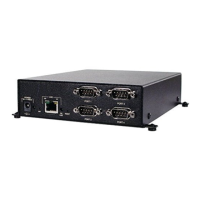
